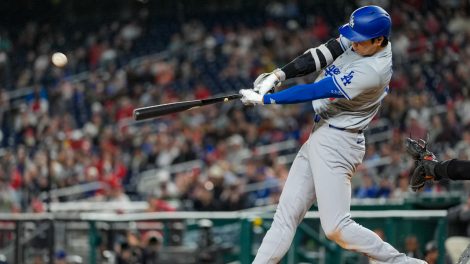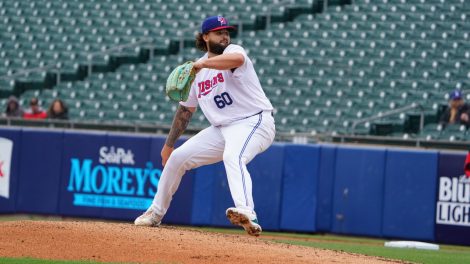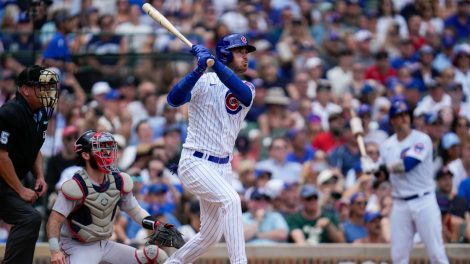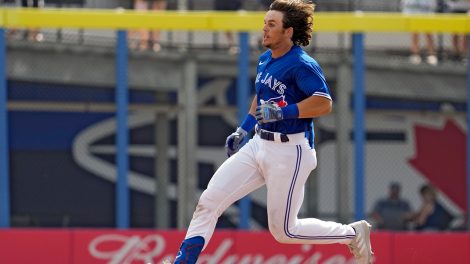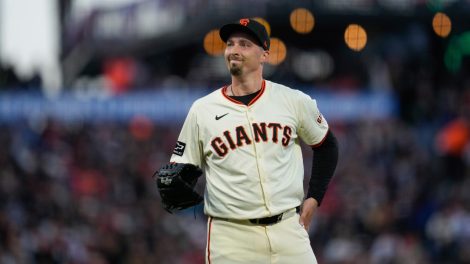TORONTO – Even in a market with scant inventory, there was still an opportunity for buyers determined to remake their teams ahead of baseball’s trade deadline. San Diego Padres general manager A.J. Preller, for example, romped through the aisles like a hoarder at Costco, making six deals involving 26 players in a buildup so audacious, the Toronto Blue Jays’ bold 2015 augmentation seemed modest in comparison.
Lance Lynn of the Texas Rangers was available for the right price. So, too, was Dylan Bundy of the Los Angeles Angels. The Pittsburgh Pirates felt things out for controllable arms like Trevor Williams and Chad Kuhl. Nothing is out of reach on Jerry Dipoto’s Seattle Mariners.
So, big deals were out there, including one Blue Jays GM Ross Atkins thought had some legs but his team eventually abandoned because “we just realized we weren’t going to line up on.” That might have been Mike Clevinger, whom Preller landed from Cleveland, or Lynn.
[snippet id=4931337]
Either way, Monday’s restrained and deliberate Blue Jays acquisitions – infielder Jonathan Villar, lefty Robbie Ray and righty Ross Stripling – on the heels of the previous adds of Taijuan Walker and Daniel Vogelbach, are instructive of this front office’s approach in a win-now mode.
Responsible management of prospect capital. Disciplined use of roster resources. Careful consideration of both the short and long-term impact. The Blue Jays had the bank to go nuts like the Padres. Instead, they acted judiciously in reinforcing the peripheries of the roster.
“Look at the Dodgers,” Atkins said, pointing to the sport’s model franchise. “It’s never all-in at one time – it’s a steady growth. They continue to build up their system. They’ve continued to make their 40-man roster more efficient and obviously very effective. It’s important to be measured, and there isn’t one juncture where, in our view, that you put all the cards on the table. For us it will be, hopefully, continuing to be able to build and have a system that continues to provide talent for us, and not just trade pieces. That’s our goal.
“We’ll hope to continue to be measured. At the same time, it’s not without making really significant deals that mean very, very high prices. But it’s too hard to say on when exactly that time will be where those bigger deals occur.”
A case can certainly be made that this wasn’t the time for the Blue Jays to go bigger, not in this bizarre, pandemic shortened 60-game season in which the expanded playoffs opened up a path to post-season contention that might not have otherwise existed.
The main reason they’re in this spot is because the stable of young arms the club has worked so diligently to amass in recent years has begun to align with a talented nucleus of position players. As this season has shown, no amount of pitching is enough, it’s difficult and expensive to acquire, and subtracting from that must be done prudently.
A complicating factor is that in the absence of minor-leagues this season, extracting full value for prospects not at a club’s alternate training site was near impossible. Were teams to value players based on last year’s performance? What’s the impact of a lost development year? How do you account for the off-season or more gains/setbacks?
“Not having as much access to scout as much talent and really zero in and do deep dives on our prospects,” was one of two trends to really impact the way the Blue Jays operated, Atkins said, the other being the scarcity of full-blown sellers.
“Especially in the NL,” he said, “the amount of teams that are in the race impacted our ability, seemingly, to what we would normally anticipate a price to be, or an appropriate acquisition cost seemed to be mildly different. And I think that was heavily influenced by teams being in it.”
So the Blue Jays unearthed some calculated alternatives:
• Vogelbach was acquired for cash, an essentially free look at a former All-Star with connections to hitting coaches Guillermo Martinez and Dante Bichette. He’s thunder off the bench, if nothing more;
• Walker was acquired for a player to be named, a solid rental arm with strong prospect pedigree, a great arm and who was pitching well when he arrived;
• Villar, acquired for a player to be named that Craig Mish reported will be Griffin Conine, is a productive switch-hitter with the type of defensive versatility the Blue Jays dearly covet, providing cover while shortstop Bo Bichette recuperates from a knee injury without blocking a franchise cornerstone;
• Ray, picked up for up-and-down lefty Travis Bergen, is another former All-Star with a career K’s per nine rate of 11.1. He’s trying to regain his former delivery after some modifications have had led to disastrous results this year, including 31 walks in 31 innings, although he’s still struck out 43;
• Stripling, who still has two years of club control beyond this one and was picked up for two players to be named, is respected for being a terrific teammate who has four quality pitches and the versatility to pitch as a starter or a reliever, although his performance has dipped this year.
• Atkins was vague about how Ray and Stripling will be deployed – “We want to make sure we have those discussions with them, and not make decisions too quickly on that front,” he said – but added on that for Ray, “ideally we get him back to that starting form that he has been in.”
Still, Walker plugged one of the holes left in the rotation when Matt Shoemaker, Nate Pearson and Trent Thornton each hit the injured list, while either Ray or Stripling could step into the bullpen day slot the Blue Jays will use Tuesday against the Marlins.
Already they’ve been creative in converting starting prospects Thomas Hatch, Anthony Kay, Ryan Borucki, Julian Merryweather and Jacob Waguespack into multi-inning relief options, and they could in theory use Ray and Stripling in that vein, too.
“I’m going to have guys we can stretch out and we can make moves like that,” said manager Charlie Montoyo. “I’m not saying that’s what I’m going to do, but there’s a chance for that, for sure.”
The acquisitions are not without risk. While Walker is throwing the ball well and Villar is down slightly from his career norms but still productive, Ray, Stripling and Vogelbach all have some work to do and limited runway to do it in.
Helping players rescue seasons in the midst of contention with only 27 games left isn’t ideal – what you want are guys who are performing so they hit the ground running the way Walker did in his six-shutout-inning debut on Saturday.
If the Blue Jays bet right, their new additions should help them lock up the club’s first post-season berth since 2016. If they’re wrong, well, the roster isn’t any worse off than it was before.
Not exactly Preller hitting the mall and hollering forget the price, nor Alex Anthopoulos saying this is the summer to double down in 2015. Just a balanced, risk-mitigated push for the post-season – the new path forward for these Blue Jays.
[relatedlinks]


